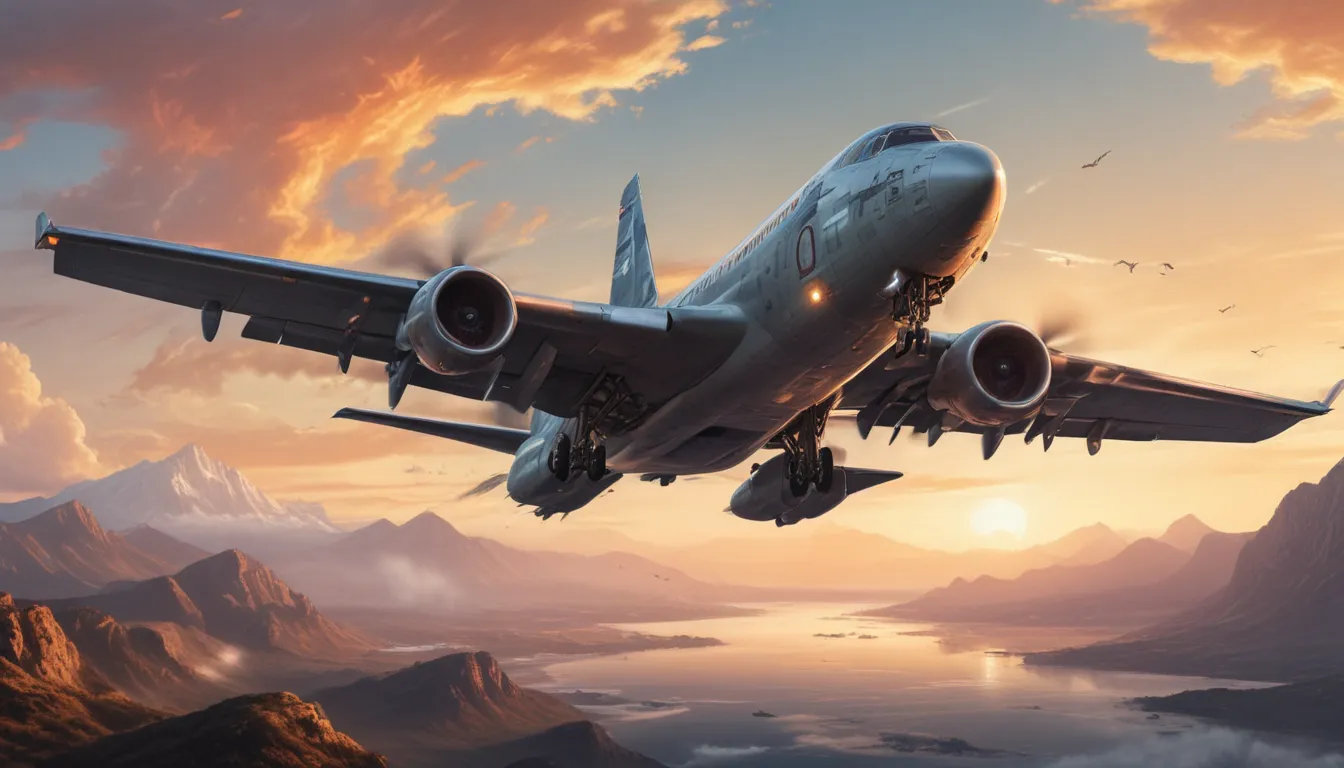A Note About Images: The images used in our articles are for illustration purposes only and may not exactly match the content. They are meant to engage readers, but the text should be relied upon for accurate information.
Aircraft, the marvels of modern engineering, have redefined the way we travel and connect with the world. From the historic flights of the Wright brothers to the cutting-edge technologies of today, aircraft have captured our imagination and propelled us into the skies. Join us on a captivating journey through 29 incredible facts about aircraft that showcase their ingenuity, innovation, and sheer wonder.
A Glimpse into Aviation History
- In December 1903, the Wright brothers achieved the first successful powered flight in Kitty Hawk, North Carolina, marking the birth of modern aviation and paving the way for remarkable advancements in aircraft technology.
- The historic flight covered a mere 120 feet in 12 seconds, laying the foundation for the extraordinary progress that has shaped the world of aviation.
Wings of Wonder: The Key to Flight
- Aircraft wings are ingeniously designed as airfoils to generate lift by creating a pressure difference between the upper and lower surfaces. This aerodynamic principle allows aircraft to defy gravity and glide through the skies with remarkable grace and efficiency.
Iconic Aircraft Through the Ages
- The Boeing 747, often hailed as the “Queen of the Skies,” captivates aviation enthusiasts with its iconic hump-shaped upper deck and majestic presence.
- The Concorde, capable of supersonic flight, symbolizes luxury and speed in commercial aviation with its ability to travel at speeds exceeding the sound barrier.
Diverse Propulsion Systems
- Aircraft can be powered by jet engines or propellers, showcasing a diverse range of propulsion systems in the aviation industry.
- The Blackbird SR-71 holds the record for the fastest air-breathing manned aircraft, reaching astonishing speeds of over 2,000 miles per hour.
Innovations in Aircraft Design
- The Airbus A380 stands as the world’s largest passenger aircraft, redefining luxury and comfort in air travel with its spacious double-deck layout and impressive capacity.
- Boeing’s 787 Dreamliner features advanced composite materials that offer a combination of lightness and durability, setting a new standard for fuel efficiency and environmental sustainability.
The Role of Aerodynamics
- The principles of aerodynamics govern aircraft design and performance, optimizing efficiency and maneuverability to shape the future of aviation.
- Aircraft wings, fuselage, and control surfaces are meticulously designed to leverage aerodynamic forces and ensure safe and efficient flight.
Ensuring Safety and Reliability
- Aircraft undergo rigorous safety inspections and maintenance procedures to uphold the highest standards of safety and reliability.
- Skilled maintenance technicians play a vital role in maintaining the integrity of aircraft systems and components, ensuring the safety of passengers and crew.
Advancements in Navigation and Communication
- Modern aircraft are equipped with advanced navigation and communication systems, including GPS technology and seamless air-to-ground communication, enhancing operational efficiency and safety.
- Weather radar systems provide real-time information to pilots, enabling them to navigate through diverse weather conditions with confidence and precision.
Sustainability and Innovation
- The aviation industry continues to pursue advancements in sustainable aviation fuels as a promising alternative to traditional jet fuels, reflecting a commitment to environmental stewardship.
- The Airbus A350 incorporates advanced fuel-efficient technologies, marking a significant milestone in eco-friendly aviation practices.
Looking Towards the Future
- The future of aircraft holds exciting prospects for supersonic travel and electric propulsion systems, promising enhanced speed, efficiency, and environmental sustainability.
- Continuous innovation in the aviation industry drives the exploration of groundbreaking technologies that will redefine the future of air travel.
Conclusion: Embracing the Wonders of Aviation
Aircraft have revolutionized the way we connect, explore, and engage with the world, setting the stage for remarkable achievements and advancements in technology. From historic milestones to modern innovations, the evolution of aircraft continues to inspire awe and captivate the imagination. As we soar towards new horizons, the boundless potential of aviation invites us to dream, discover, and explore the wonders of flight.
FAQs
-
What are some of the most iconic aircraft in history?
Iconic aircraft such as the Concorde, the SR-71 Blackbird, and the Space Shuttle have left an indelible mark on history, representing significant milestones in aviation. -
How do aircraft engines work?
Aircraft engines, whether jet or propeller-driven, operate on the principle of thrust generation, propelling the aircraft forward through the air using the power generated by the engines.
We are committed to delivering trustworthy and engaging content, ensuring that each fact shared is not only fascinating but also credible. Explore and learn with us as we uncover the wonders of aviation, guided by a dedication to quality and authenticity.






